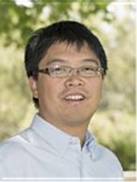讲座地点:yl23455永利九里校区机械馆2331
讲座时间:2019年7月3日 下午 3点
报告内容简介
Launching an initiative to tackle rising needs in the field of engineering and biology, luminogenic materials with aggregation-induced emission (AIE) attributes have been developed, recently. The most popular method to prepare AIE luminogen (AIEgen) particles is precipitation, where quick injection of the AIEgen solution into an aqueous media is performed. During the precipitation process, the AIEgen particles are formed in a very short time. Within such a short period of time, these particles can’t arrange themselves in an ordered structure, which yields amorphous particles with a wide size distribution. In such disordered amorphous aggregates, AIE particles still suffer from a relatively loose packing, which allows the non-radiative relaxation pathways to proceed, thus affecting the ultimate brightness of the AIE particles, despite their many successful applications. To address this problem, in this study, a rapid, novel and highly efficient process for tuning AIEgen particle size has been reported by using vortex fluidic device (VFD). VFD houses an angled rapidly rotating borosilicate glass tube (20 and 17.5 mm outer and inner diameter, respectively, 19.4 cm in length that inclined at 45° relative to the horizontal position). By precisely varying the speed of the glass tube, AIEgen solutions to anti-solvents volume fraction, rate of injection, retention time and the angle of rotation, AIEgen particles can be readily generated in high homogeneity and remarkably as spheroidal particles. A custom-made spectrophotometer is assembled together with VFD to measure the fluorescent properties of AIEgen particles, in situ (during formation) and the effect of particle size on fluorescent properties of AIEgens was studied. The result was production of a wide range of AIE particles with optimal fluorescent properties that can be used as a research tool for different applications. The application of this research is not limited to the research environment only and has a tangible potential for commercial purposes.
报告人简介
 Dr Youhong Tang is an Associate Professor and was an Australian Research Council-Discovery Early Career Researcher (ARC-DECRA) fellow in Flinders University. Currently, he is the Deputy Director of International Laboratory for Health Technologies, a research leader in Institute for NanoScale Science and Technology (ERA rank 5 in nanotechnology) and Medical Device Research Institute (ERA rank 5 in materials engineering) in Flinders University, Australia. He was elected as a Fellow of Royal Society of Chemistry (FRSC), UK last year. He obtained his PhD degree in the Hong Kong University of Science and Technology (HKUST) in 2007 and moved to Flinders University in 2012 from Centre for Advanced Materials Technology, the University of Sydney. He is a material science and engineering researcher with research interests mainly focused on (1) Structure-processing-property relationship of polymeric (nano)materials; (2) Biomaterials, biosensors and their devices with aggregation-induced emission features. In the last 5 years, he has published >120 SCI journal papers, 9 book chapters and 2 books and has secured 5 funds from Australia Research Council, 1 fund from Australian Solar Thermal Research Initiative and 3 funds from South Australian Government.
Dr Youhong Tang is an Associate Professor and was an Australian Research Council-Discovery Early Career Researcher (ARC-DECRA) fellow in Flinders University. Currently, he is the Deputy Director of International Laboratory for Health Technologies, a research leader in Institute for NanoScale Science and Technology (ERA rank 5 in nanotechnology) and Medical Device Research Institute (ERA rank 5 in materials engineering) in Flinders University, Australia. He was elected as a Fellow of Royal Society of Chemistry (FRSC), UK last year. He obtained his PhD degree in the Hong Kong University of Science and Technology (HKUST) in 2007 and moved to Flinders University in 2012 from Centre for Advanced Materials Technology, the University of Sydney. He is a material science and engineering researcher with research interests mainly focused on (1) Structure-processing-property relationship of polymeric (nano)materials; (2) Biomaterials, biosensors and their devices with aggregation-induced emission features. In the last 5 years, he has published >120 SCI journal papers, 9 book chapters and 2 books and has secured 5 funds from Australia Research Council, 1 fund from Australian Solar Thermal Research Initiative and 3 funds from South Australian Government.